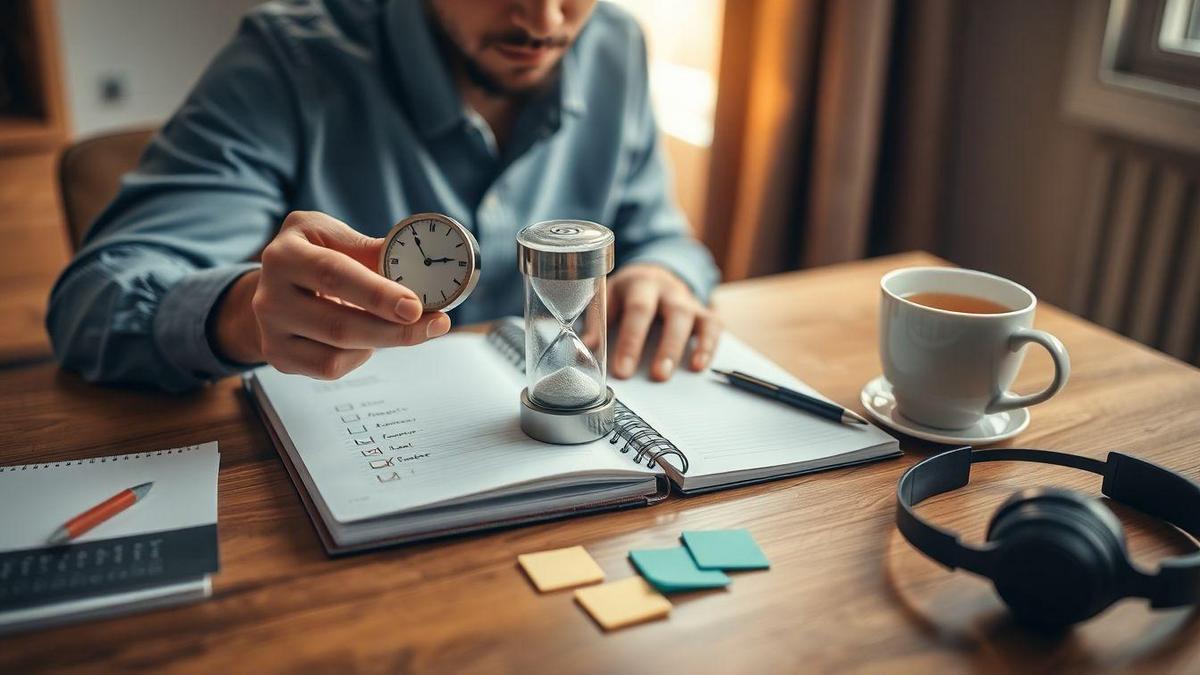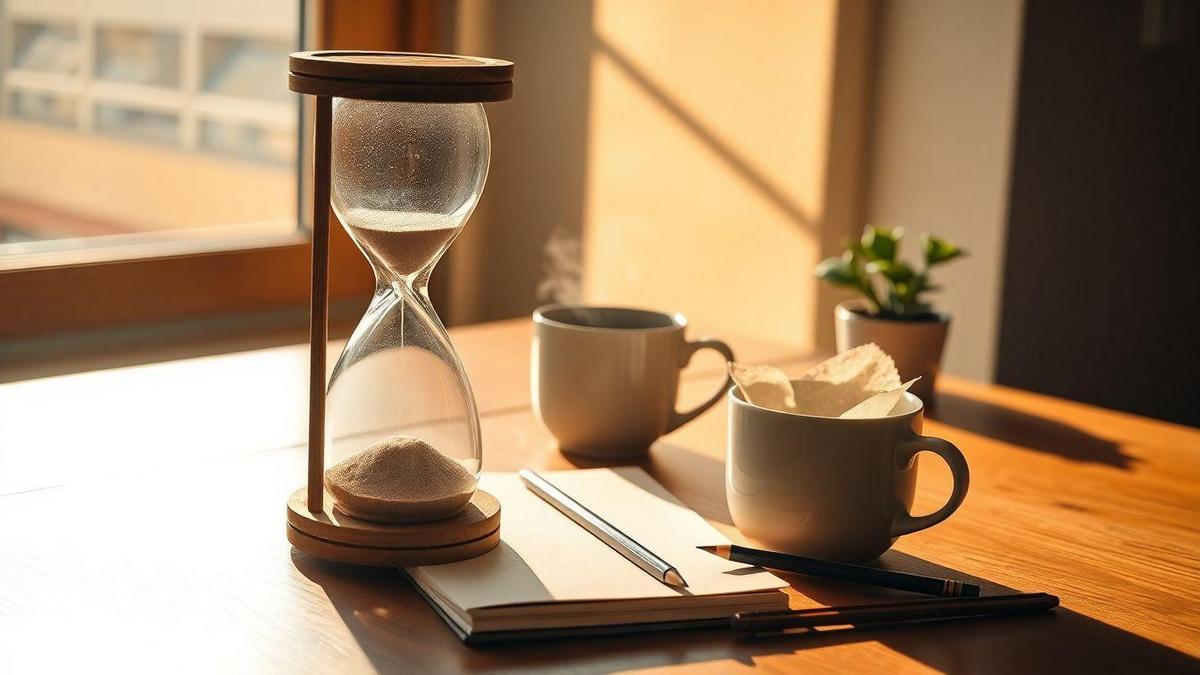The power of just 20 minutes of practice a day
The power of just 20 minutes of practice a day is the focus here. I explain the science of neuroplasticity and the spacing effect, and why short daily sessions beat long rare ones. For help choosing an instrument, see how to pick your first instrument without regrets.
Key takeaway — The power of just 20 minutes daily
- I get calmer by doing just 20 minutes (music can be deeply restorative; see music as therapy).
- I learn more with small daily reps.
- I build a habit that grows over time.
- Big tasks finish when broken into short chunks.
- I feel proud when I stick to a small daily plan.

Why this works: neuroplasticity and the spacing effect
Neuroplasticity responds to short, regular sessions
I think of the brain like a garden. Small, steady watering grows roots better than a single flood. Neuroplasticity means the brain changes with use. When I practice for 20 minutes a day, I give my brain frequent, manageable signals to rewire. Short bursts make learning feel less scary and produce fewer mistakes over time. That steady work helps skills stick — ideas related to practice vs. talent are worth reading in the broader discussion on talent and practice. Read more about neuroplasticity and how practice rewires brain.
| Practice style | What the brain does | What I see |
|---|---|---|
| 20 min daily | Repeats small changes; strengthens connections | Faster steady progress; fewer bad habits |
| Long, rare sessions | Big bursts, then fade | Quick gains, quick drop-off |
The spacing effect and memory
The spacing effect means breaks between sessions help memory consolidate. Practice, sleep, brief review—repeat—so memory gets firmer. I use retrieval (trying to recall without looking) more than re‑reading. Short daily tries give many retrieval opportunities—that’s why the power of just 20 minutes of practice a day is so effective. The evidence is summarized in effective learning techniques including spacing and retrieval.
| Why spacing works | How 20 min fits |
|---|---|
| Less interference | Small dose, less overload |
| Better consolidation (sleep helps) | Repeated nights firm the memory |
| Stronger retrieval paths | Many quick recalls beat one long pass |
A simple science‑backed start tip
I begin with a single 20‑minute timer. Phone away, one clear goal. For music: one riff (if you’re deciding between instruments, this can help after you read which instrument fits your style). For language: five words in context. I do this daily for a week, track it in a tiny notebook, then tweak. The timer turns practice into a sprint, not a marathon. For a full template, see a simple daily practice routine.

I build a reliable 20‑minute habit
I treat practice like a short walk I take every day. I pick 20 minutes I can keep and use the idea The power of just 20 minutes of practice a day to stay calm and steady. Same start cue, same finish signal—habit becomes trustable. Fogg’s model clarifies the role of cue, ability and motivation—see the behavior model for building tiny habits.
Here’s a tight session breakdown I use so I don’t scare myself off:
| Time (min) | Focus | Example action |
|---|---|---|
| 0–2 | Setup | Put materials out, set timer |
| 2–7 | Warm‑up | Easy drills or review |
| 7–17 | Focused work | One clear micro‑goal, slow and correct |
| 17–20 | Wrap & note | Quick note on progress |
Habit stacking: hitch the new habit to an old one
I pair practice with an action I never miss. After that action, I start practice. Examples: after breakfast, after brushing my teeth, right after I sit at my desk. I keep the trigger the same for a month. The old action reduces the need for extra willpower.
Clear cues and tiny rewards
Cues must be obvious; rewards must be quick and pleasant. They close the loop in the brain.
| Cue | Action | Small reward |
|---|---|---|
| Phone alarm 6:30 | 20‑minute practice | A star on my habit chart |
| Mug on table after coffee | Practice for 20 minutes | A 2‑minute stretch |
| Desk light on | Open practice app | A satisfying checkmark |
My easiest cue: put the practice tool out the night before. In the morning the cue pulls me in. I set a 20‑minute timer, say aloud Two zero minutes, start, smile, and note progress.
One clear rule: one goal, one 20‑minute block, one timer
I call it my daily sprint. It prevents tasks from ballooning. I tap into The power of just 20 minutes of practice a day and see steady wins. Small bursts add up like a snowball.
Plan one focused goal per session
I pick a single, tiny goal. No piling on.
| Skill | My 20‑minute goal | Why it works |
|---|---|---|
| Guitar | Learn one riff cleanly | Bite‑sized focus |
| Language | Drill 10 new words in context | Repetition > long lists |
| Writing | Finish a single paragraph | Momentum > perfection |
| Fitness | 20 min bodyweight HIIT | Short, intense habit |
If you’re choosing where to apply those 20 minutes, a short guide on picking an instrument can help: how to choose your first instrument.
Block the time and remove distractions
I treat the slot like a meeting with myself: calendar block, quiet space, materials ready.
Quick checklist:
- Calendar: block and name it.
- Phone: Do Not Disturb or face down.
- Space: clear desk/area.
- Materials: have apps/instrument ready.
Single‑timer trick
One timer, nothing else. Set 20 minutes, work, stop when it rings. No clock-checking, no multitasking.
Steps:
- Set a single timer for 20 minutes.
- Work only on the chosen goal.
- When it ends, stop and note progress.
- If I want more, decide after a short break.

Focused, deliberate practice in 20 minutes
I use The power of just 20 minutes of practice a day like a laser: short, sharp, aimed at one skill. Deliberate practice steps:
- Choose one micro‑goal.
- Isolate the hardest part.
- Practice it slowly and correctly.
- Repeat with feedback or quick self‑check.
| Time block | Action | Why it works |
|---|---|---|
| 2 min | Warm‑up / set goal | Prepares the brain |
| 14 min | Focused practice | Most learning happens here |
| 2 min | Quick test note | Locks progress, guides next session |
| 2 min | Cool down / reflect | Ends habit and builds memory |
If music theory feels like a wall, practical approaches make it small and usable—see a practical take on demystifying theory for songwriters at breaking music theory into steps. I cut distractions: phone in another room, tabs closed, housemates told. Micro‑goals: clean scale, memorize one bar, nail one phrase.
Quick focus checklist (30 sec):
- Ready: instrument/gear checked.
- Quiet: distractions off.
- Goal: one micro‑goal written.
- Timer: set for 20 minutes.
- Mind: one deep breath.
Microlearning, spaced repetition, and reviews
I use microlearning every day. I set aside 20 minutes and make it count: one small goal each session. This habit—The power of just 20 minutes of practice a day—beats rare long pushes. A practical template for that daily flow appears in a simple practice routine.
Spaced repetition for longer retention
I space reviews to hit a topic just as I start to forget it: learn, review next day, review after a few days, then after a week.
| Day | What I do | Why it works |
|---|---|---|
| Day 1 | Learn a tiny idea | Seed planted |
| Day 2 | Quick review (5 min) | Reinforce fresh memory |
| Day 4 | Short practice (5–10 min) | Catch fading recall |
| Day 8 | Test and use (10 min) | Move to long‑term memory |
Break skills into tiny steps
Split big skills into small moves; do one move per session.
| Tiny Step | Time | Goal |
|---|---|---|
| Warm‑up/review | 3 min | Wake my brain |
| New micro task | 12 min | Focus on one skill |
| Short test | 3–5 min | Check learning |
End each session with a short review: What went well? What was hard? What is my single next step? One‑sentence answers take under two minutes and guide the next session.

Pairing: meditation or a quick workout for balance
Short meditation before practice
A quick meditation clears my mind and improves focus. On days I meditate first, my practice is calmer and more productive—another reason I value The power of just 20 minutes of practice a day. For the calming benefits of playing and focused attention, see the perspectives on music as therapy. For clinical overviews, see meditation benefits for focus and attention.
Meditation mini‑routine:
- Sit, set a timer — 1 min.
- Deep belly breaths — 3 min.
- Body scan — 3 min.
- Focus on single breath/word — 3 min.
- Open eyes, stretch, set one clear goal — 2 min.
20‑minute workout to boost energy
When I need energy, a short workout wakes body and mind. I repeat the circuit twice with short rests. The CDC highlights how short activity sessions improve health—see short workouts improve physical and mental health.
| Exercise | Time/reps | Why |
|---|---|---|
| Jumping jacks | 1 min | Raise heart rate |
| Push‑ups | 10–15 reps | Upper body, focus |
| Squats | 15 reps | Grounding power |
| Plank | 45 sec | Core & steady breath |
| March/jog in place | 1 min | Keep heart rate up |
Simple morning pairing: water → 10‑min meditation → 20‑min workout (on high‑energy days) → focused practice. Consistency matters more than perfection.

Motivation, tracking, and variety
Celebrate small wins
Small wins fuel habit building. I check boxes and jot short notes.
- Record simple wins: 3‑day streak, learned one new chord, kept focus for 20 min.
- Say a quick line of praise after each session.
| Small win | Why celebrate | Time to log |
|---|---|---|
| 3‑day streak | Builds consistency | 5 sec |
| Learned one chunk | Shows progress | 10 sec |
| Full 20 min focus | Strengthens habit | 5 sec |
Add variety to stay engaged
Split the 20 minutes: 5 min warm‑up, 10 min skill work, 5 min review/play. Swap focuses every few days to keep practice fresh.
Tiny reward list
Keep quick rewards that match the win.
| Progress level | Tiny reward | When |
|---|---|---|
| Daily win | Favorite song 5 min | After any session |
| 3‑day streak | Special snack or walk | After 3 days |
| Week of practice | Watch one episode | End of week |

Track progress and get feedback
I log each session so I can see real gains. Short practice is like small deposits in a savings account.
Quick daily log (under 2 min)
I record: Date | Goal | Minutes | Score (1–5) | One short note.
Example: 2025‑09‑01 | Scales | 20 | 4 | Felt smoother on bar 3.
| Column | What I record | Why it matters |
|---|---|---|
| Date | 2025‑09‑01 | Keeps history |
| Focus | Scales/technique | Shows what I practiced |
| Minutes | 20 | Tracks consistency |
| Score | 1–5 | Quick feedback |
| Note | One short line | Actionable idea |
Weekly review to adjust
Each Sunday I scan the last seven entries and ask: What worked? What needs a tweak? Then I pick one tiny change for next week.
| Metric | How I read it | Action |
|---|---|---|
| Consistency (%) | Days practiced ÷ 7 | Aim to raise by 10% |
| Avg score | Mean of scores | Keep or change focus |
| Common notes | Repeated issues | Add targeted drills |
I use a simple tracking sheet on my phone—five fields, auto‑date, quick dropdowns. Two minutes and I’m done.

Troubleshoot setbacks and protect the microhabit
I treat practice like a potted plant: a little water every day keeps it growing. I believe in The power of just 20 minutes of practice a day. When things go wrong, I act fast with simple fixes.
Plan B and missed days
Life interrupts. I accept that and use a small Plan B so I never skip practice fully.
- Swap‑in activities that still count.
- Split into a 1010 (two short bursts).
- Passive practice when tired (listen or review).
- Tell a friend for light accountability.
Example: Missed afternoon slot—10 minutes at lunch 10 minutes before bed saved the habit.
Common barriers and tiny fixes
| Barrier | Tiny fix | Why it works |
|---|---|---|
| No time | Split into two 10‑min sessions | Fits tight days |
| Low energy | Passive practice (listen/review) | Keeps momentum |
| Distraction | 2‑min setup (clear spot, timer) | Reduces friction |
| Forgetting | One alarm tied to cue (coffee) | Triggers habit |
| Mood dip | Do a fun mini‑task | Brings joy back quickly |
I keep a backup plan on a sticky note: 5‑minute rescue, split option, passive fallback. Stress drops when I pull that note—consistency survives.

Conclusion
I keep coming back to one truth: 20 minutes is powerful. Treat practice like watering a garden—consistent small doses coax big growth. The science of neuroplasticity and the spacing effect is my north star. Short daily hits beat marathon sessions every time.
I build the habit with habit stacking, clear cues, tiny rewards, and a single timer. Each session is focused and tiny—one micro‑goal, one laser‑like sprint. I track progress, celebrate small wins, and use a ready Plan B for life’s curveballs. Those tweaks keep momentum rolling like a snowball down a hill.
If you want steady gains without burning out, keep it short, simple, and consistent. I’ve seen skills shift in weeks when I stick to The power of just 20 minutes of practice a day. Want more tips and short, smart routines? See simple practice routines and practical advice on choosing your first instrument.
Frequently asked questions
Q: How can just twenty minutes a day really help me learn?
A: I use The power of just 20 minutes of practice a day. Short, focused reps beat long, unfocused sessions. Skills grow fast with consistency.
Q: Is twenty minutes enough to build a habit?
A: Yes. Daily small wins stack up and make the routine stick.
Q: What changes will I see after doing this daily?
A: You’ll feel calmer and more confident. Progress appears in weeks, not months.
Q: What if I miss a day?
A: Use a Plan B: split sessions, passive review, or a 5‑minute rescue. Consistency over perfection matters.
Q: How do I pick a micro‑goal?
A: Choose one clear, measurable chunk you can finish or advance in 20 minutes.
The power of just 20 minutes of practice a day is simple: small, repeatable actions compound into real progress. Start today.

7 comentários em “The power of just twenty minutes daily”